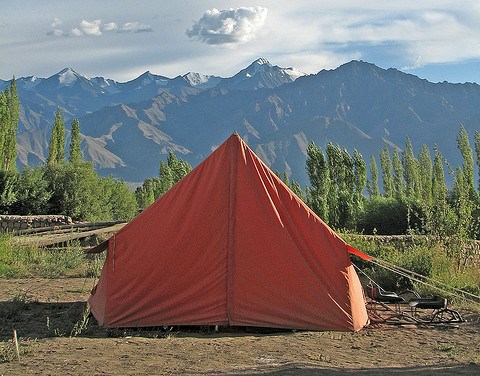The weather’s getting warmer and in Saskatchewan that means one thing: spending time in the outdoors. But while swimming, hiking, roasting marshmallows, and boating are all fun activities, it’s important to stay safe.
There are many things to remember about hiking but Joe Milligan, recreation/interpretive specialist with Saskatchewan Parks, says the most important thing is to plan everything out in advance.
“With a lot of camping, a lot of planning comes prior to leaving your home,” he said.
There are two different types of camping: front country (which would be staying in campgrounds or near a town or city) and back country (which is more rugged and farther from civilization). Rules generally overlap for the two different types of camping, but there are some differences.
Starting a fire
Always make sure you start a fire in a safe place. Check online prior to camping for any possible fire bans in the area. Even if you do your research, it’s a good idea to check in the parks office to double check the parameters around fires. Don’t start a fire with substances like lighter fluid or gasoline, as this can cause the fire to get out of control. As well, don’t make a fire bigger than necessary, whether you’re using it for cooking, roasting marshmallows, or just relaxing beside.
“It’s very important to never leave a campfire unattended, even for just a moment, because it can get away with a gust of wind,” Milligan said.
Never start a fire near flammable items.
“If you’re doing back country camping … it’s important that you ensure that the fire is built in a safe location so it doesn’t go into the roots of trees and will not spread easily,” he said.
Most importantly, make sure the fire is totally extinguished before leaving your campsite.
Coping with the weather
Whether it’s rain, storms, or heat, it’s important to be prepared for any weather that might come your way. As always, planning is essential: check the weather online and prepare accordingly.
Observe the sky for signs of impending storms. If the smoke of your fire starts behaving differently, that could also indicate weather changes. If a storm is coming, make sure pets and children are accounted for and have taken shelter. If possible, stay in your vehicle or trailer until the storm passes.
To prepare for rain, make sure you have appropriate clothing and/or take shelter if needed.
It’s always important to stay hydrated while outdoors, especially if it’s hot. Milligan said to take special care to make sure children are drinking water because they might always take the time to drink water or want to do it.
“With kids you can have them pick out their own water bottle,” Milligan said. “They get excited and it becomes theirs.”
Also, as always, wear appropriate clothing and accessories such as a hat and sunglasses, and wear sunblock.
“When it does get particularly hot in the afternoon … that’s a good time to have a quiet break and a little bit of a rest,” Milligan said.
Swimming and boating
Make sure children are supervised and tell them to always stay within the sight of adults.
“That’s probably one of the most important things you can do,” Milligan said.
While boating (which includes motorized boats, canoes, and kayaks), it’s important to wear a lifejacket, regardless of age or boating experience.
“If you cannot look after yourself, you can’t help anyone around you,” he said.
And just like cars, don’t mix alcohol and boating. Not only is it unsafe, but you could face legal punishment as well.
Hiking
The important thing with hiking is to make sure you don’t get lost.
“If you’re going off onto a trail, look at the maps in advance and check the office for any safety concerns,” Milligan said.
Make sure you are well prepared and bring snacks, water, a hat, sunscreen, bug spray, proper footwear/clothing, and sunglasses.
Plan your hike so that you have enough time and energy to get back to where you started.
Dealing with wildlife
The number one thing to remember with regards to wildlife is not to touch them.
“We always suggest that you never approach wildlife. You can look at it from a distance,” Milligan said. “They may look cute and harmless and may be unpredictable.”
At this time of year as well, many animals have young, which can cause them to get protective and territorial. If you come across a baby animal with no mother nearby, remember to leave it alone.
“Leave it be. Do not touch it. It’s not lost. The mother has placed it there for a reason,” Milligan said. Watch from a distance and then back up and go on your way.
Be on the lookout for signs that the animal is irritated, such as ears back or hair up.
With predators, it’s important to remember that most of the time, they’re more scared of you than you are of it. To prevent attracting animals, keep a clean campsite. Dispose of garbage in designated areas, clean up food residue, and keep food kept away.
“They may be passing through or they may be looking for something,” Milligan said, which is why it’s important to not leave food out.
If you see a bear, make sure that children and pets are safe and take shelter in a vehicle or trailer. If it’s not possible to take shelter at that moment, don’t make eye contact, talk in a low voice, slowly back away (make sure to not show your back), and get to a safe location. It’s also important to call the park office. Cougars are very rare, but the same rules apply.
“(In general), I think the biggest thing is people don’t plan prior to their trip,” Milligan said.
For information and planning purposes, he recommends the Sask Parks and Tourism Saskatchewan websites.




